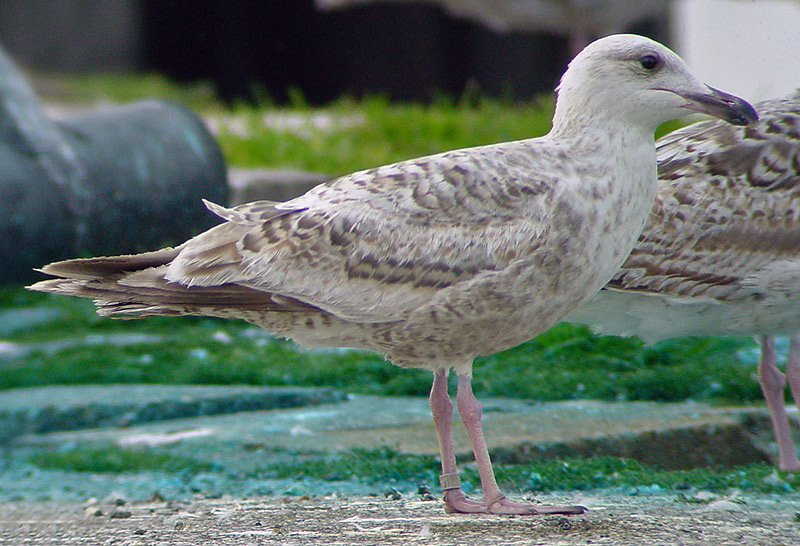 Herring Gull- Zilvermeeuw (argentatus & argenteus)
Herring Gull- Zilvermeeuw (argentatus & argenteus)
(last update:
Herring Gull plumages:
hg 1cy July
hg 1cy August
hg 1cy September
hg 1cy October
hg 1cy November
hg 1cy December
hg 2cy January
hg 2cy February
hg 2cy March
hg 2cy April
hg 2cy May
hg 2cy June
hg 2cy July
hg 2cy August
hg 2cy September
hg 2cy October
hg 2cy November
hg 2cy December
hg 3cy January
hg 3cy February
hg 3cy March
hg 3cy April
hg 3cy May
hg 3cy June
hg 3cy July
hg 3cy August
hg 3cy September
hg 3cy October
hg 3cy November
hg 3cy December
hg sub-ad January
hg sub-ad February
hg sub-ad March
hg sub-ad April
hg sub-ad May
hg sub-ad June
hg sub-ad July
hg sub-ad August
hg sub-ad September
hg sub-ad October
hg sub-ad November
hg sub-ad December
hg ad January
hg ad February
hg ad March
hg ad April
hg ad May
hg ad June
hg ad July
hg ad August
hg ad September
hg ad October
hg ad November
hg ad December
|
(4 images) Herring Gull DA 2163212cy (argenteus), May 17 2002, Boulogne/Mer, France (50.43N-01.37E). A 2cy argenteus with a French ring: Museum Paris DA 216321. This is a local argenteus, ringed in the Pas-de-Calais region, near the village of Wimereux, NW France (50.46N,01.36E), only 6.6 kilometers from the place it spend the entire summer in 2cy. It was ringed as 1cy bird on July 23 2001, but ring-data do not tell whether it was born at that location or not. From early April, the inner primaries are shed and new second generation primaries grown in. The last juvenile primary (P10) will be shed by the first week of August. The majority of argenteus complete the primary moult by the first week of October, with a new second generation P10 fully grown. The new primaries are dark with a tiny pale tip on the fresh flight-feathers. Again, the four inner primaries show an extensive pale window, as both inner and outer-web are pale greyish white-brown, contrasting with the outer-wing. A pale inner-web can still be found in P7. This bird has advanced primary moult compared to Belgian and Dutch argenteus (which show P1 to P3 missing); this French argenteus has P1-P3 fully grown and the outer primaries P6-P10 still juvenile. Remarkably, three Paris-ringed Herring Gulls were found with the same moult score. Compared with a sample of 75 randomly chosen 2cy Herring Gulls, only two other birds had dropped p5. Thus, as first figures indicate, Herring Gulls from French colonies may be ahead in primary moult about one full primary. Unlike the 2cy individual ringed DA 216323, this bird DA 216321 has the greater coverts very bleached. These Paris-ringed argenteus are different from Dutch/Belgium Herring Gulls in some respects:
image above: DA 2163212cy, May 17 2002, Boulogne/Mer, France (50.43N-01.37E). image below: DA 2163212cy, June 13 2002, Boulogne/Mer, France (50.43N-01.37E). In June, DA 216321 strongly resembles another Paris-ringed argenteus present on Boulogne-sur-Mer and ringed: DA 216323 Museum Paris.
images below: DA 2163212cy, July 10 2002, Boulogne/Mer, France (50.43N-01.37E). 2cy DA 216321 was still present in July 2002. Again, this French-ringed argenteus belongs to the most advanced argenteus present at Boulogne-sur-Mer, regarding moult-stage. P7 is already longer than P6 and only P10 is still juvenile. As can be seen in the table below, such advanced primary moult occurs in less than 3% of 2cy Herring Gulls at Le Portel (n = 146, origin of this mixed flock unclear, but probably belonging to colonies in NW France, Belgium and the Netherlands, Britain not certain).
|
||||||||||||||||||||||||||||||||||||||||||||



